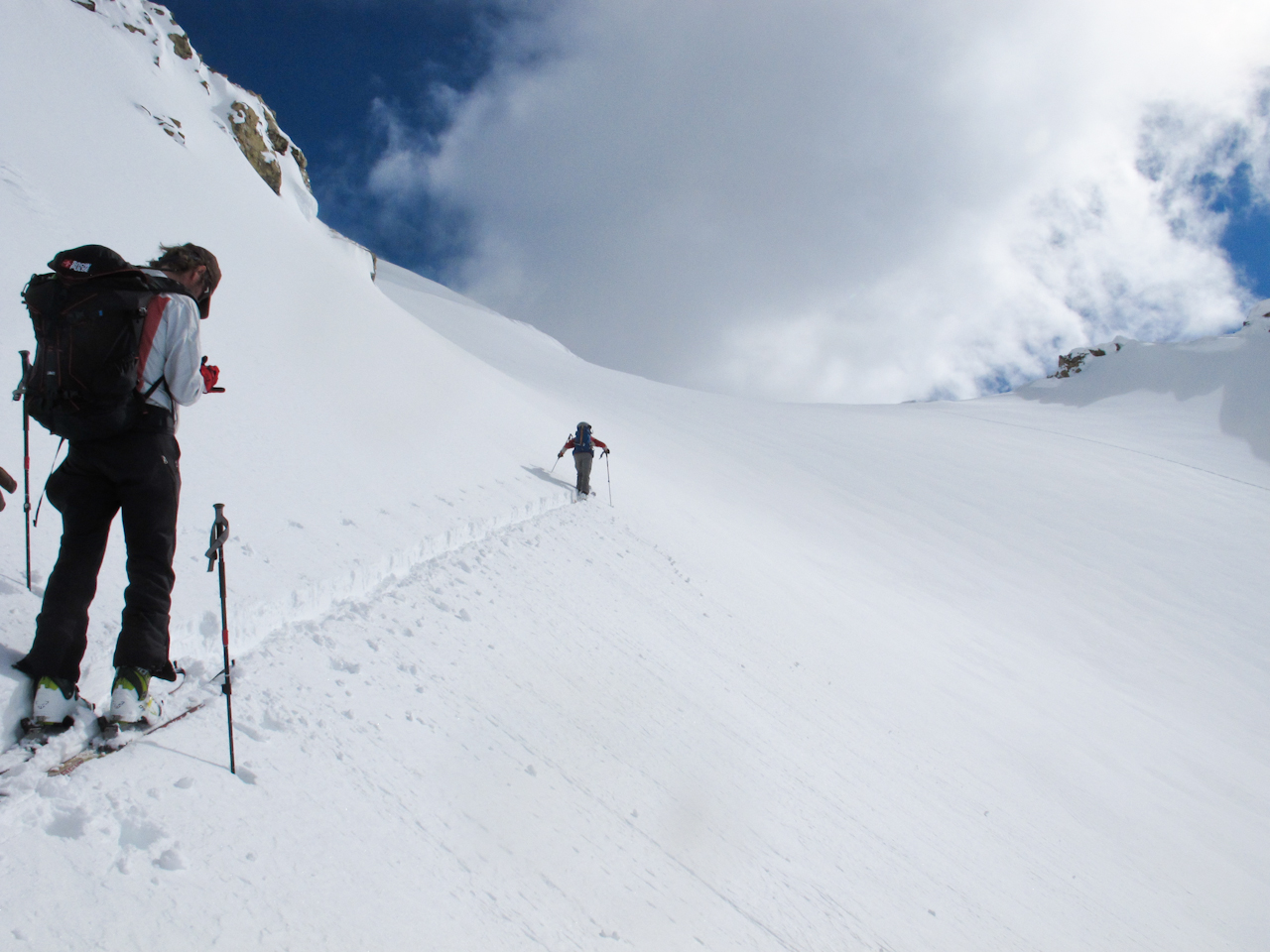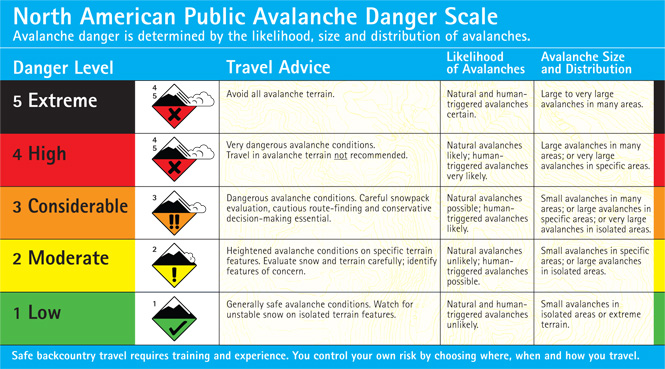First Light Mountain Guides teaches the most up-to-date and effective avalanche education curriculum available. AIARE's curriculum has been built over the last fifteen years by hundreds of mountain guides, snow scientists, ski patrollers, and professional skiers and gives students the most effective tools for understanding avalanches and making decisions in avalanche terrain.
Why should you take this course?
Plain and simple: to reduce the chances of dying in an avalanche. Take responsibility for your own self.
-Do you have a thorough understanding of and ability to identify avalanche terrain? Can you choose and identify safe routes of ascent and descent?
-Can YOU name and understand the different types of avalanches, the mechanics behind their formation, and the environments in which they live, and how to treat them in the mountains?
-loose wet
-loose dry
-storm slab
-persistent slab
-deep slab
-deep persistent slab
-wind slab
-Are you able to interpret the avalanche bulletin and turn it into useful knowledge about where and how to ski?
-Do you know how to manage the human factors; which are the main contributors to avalanche accidents and deaths?
-Do you usually just show up at the Aiguille du Midi and just follow whoever has the phattest skis and steeziest clothes?
-Do you want to be able to make your OWN informed decisions about where and how to ski/ride in the winter snowpack?
If you are curious then read on...
The level one is a 4 day/32 hour introduction to avalanche hazard management. The course is expected to:
- Provide a basic understanding of avalanches
- Describe a framework for decision making and risk management in avalanche terrain
- Focus on identifying the right questions, rather than on providing "answers."
- Give lessons and exercises that are practically oriented, useful, and applicable in the field.
Students can expect to develop a good grounding in how to prepare for and carry out a trip, to understand basic decision making while in the field, and to learn rescue techniques required to find and dig up a buried person (if an avalanche occurs and someone in the party is caught).
A final debrief includes a knowledge quiz to test student comprehension and to give feedback to instructors. Students are encouraged and counseled on how to apply the skills learned and told that no course can fully guarantee safety, either during or after course completion.
Student Learning Outcomes
At the end of the Level One course the student should be able to:
- Plan and prepare for travel in avalanche terrain.
- Recognize avalanche terrain.
- Describe a basic framework for making decisions in avalanche terrain.
- Learn and apply effective companion rescue.
- Understand avalanche types and their characteristics.
- Describe the formation and release of avalanches.
- Gather relevant avalanche, snowpack, and weather observations.
- Travel techniques (up and down) for risk management in an off-piste setting.
- Effectively communicate as a team.
- Perform companion rescue in the case of an avalanche incident.
Instructional Sessions
(32 hours including both class and field instruction):
1. Introduction to the Avalanche Phenomena
- Types and characteristics of avalanches
- Avalanche motion
- Size classification
- The mountain snowpack: an introduction to metamorphism and layering
2. Observations and Information Gathering
- Field observation techniques
- Bonding tests: rutschblock, compression test
- Avalanche danger factors; "Red Flags".
- Observation checklist
- Avalanche danger scale
- Trip Planning and Preparation
- Avalanche terrain recognition, assessment, and selection
- Route finding and travel techniques
- Decision making and Human Factors
- Companion Rescue and Equipment
Cost: 300 Euros/person. Students are required to rent or own balloon (airbag) backpack for the course.
Price includes: all instruction, UIAGM/IFMGA Mountain guide, qualified AIARE Instructor, 4 days instruction, AIARE Fieldbook, e-copy of textbook.
Exclusions: lift passes for ski days (usually 3 days), food during course. Rescue gear (beacon/shovel/probe) available for rent.
Private courses and dates available, please enquire.




